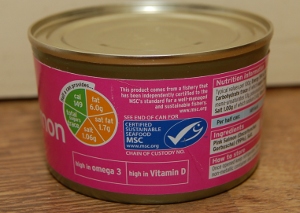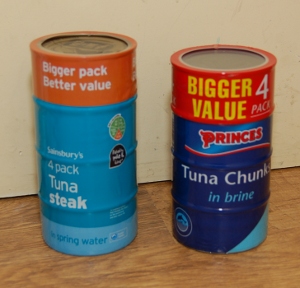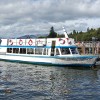The End Of The Line - shopping for sustainable fish
9 December 2010
After watching the film documentary - The End of the Line I've now read the book as well. The End of the Line examines the damage that commercialised fishing has done and is still doing to the worlds oceans putting profits ahead of the sustainability of the fish. This has endangered many species of fish, all but wiped out the entire stocks of certain fish and is contributing to famine in Western Africa.
The book shows that whilst fish quotas are set for certain seas these are set far too high and endangered species continue to be hunted for food. Few would go into a restaurant that had white rhino on the menu, but endangered fish are still available in many restaurants.
For a book about protecting the marine environment it is very easy to read. The tone of the book makes it easy to follow and the statistics at just the right level to provide an understanding of the issues without making it a bore to read. If you are not a big reader then I'd recommend getting DVD of The End of the Line as the footage puts the message across more than the books does, but both are well worth having.
The main thing is that there is a lot we can do as consumers to influence this. One way to make a difference is to change the way you shop only buying responsibly sourced fish and seafood. Whilst this may sound like it's going to cost more in many cases that is not the case and can even save money (see below).
Putting it into practice
After watching the book and DVD I've now changed my shopping habits towards more sustainable seafood. Today I gave my usual Tescos a wide berth (although Tescos are slowly introducing some items of sustainable fish) and instead went to Sainsbury's. There are other supermarkets that are even better such as Marks and Spencer and Waitrose, but Sainsbury's is particularly convenient for my home.
Sainsbury's has added more information to their fish detailing the method that the fish are caught (generally pole and line is better and net trawling is worse), as well as where the fish comes from. One thing to be careful though is that some fish labels can be a little confusion. A lot of fish is labelled as "line caught" which may sound similar to pole and line, but is actually referring to long-line fishing which can result in a lot of by-catch which is usually thrown back into the sea dead, also Dolphin Friendly labels have been on cans of tuna for some time, but this is more of a marketing ploy than an effort in sustainable fishing (see: Dolphin-friendly tuna – is it a meaningless label?).
The sign that does mean that fish is caught from sustainable stocks, in less wasteful ways is the logo from the Marine Stewardship Council (MSC) such as shown on the tin of Pink Salmon below:

The Sainsbury's own brand tinned pink salmon is MSC certified and at £1.08 a tin was much cheaper than Princes tinned pink salmon at £2.24. So cheaper on the pocket as well as being a certified sustainable seafood.
 It is a similar story with tinned tuna. A 4 pack of Sainsbury's Pole and Line caught Tuna in spring water cost £3.99 whereas the 4 pack Princes tuna in spring water cost £ 5.39.
It is a similar story with tinned tuna. A 4 pack of Sainsbury's Pole and Line caught Tuna in spring water cost £3.99 whereas the 4 pack Princes tuna in spring water cost £ 5.39.
The tuna in the Sainsbury's be good to yourself range is also fished by pole & line and even the Sainsbury's value tuna was marked as pole and line.
Buying King Prawns was a bit more uncertain as it is listed on the fish to avoid list by Fish Online, which suggests only eating organically farmed King Prawns, although in the case of farming this is due to the potential environmental impact of some farming methods. The Taste the Difference range however included "Responsibly sourced" King Prawns in both as fresh and frozen. The packaging states "These prawns are reared on farms which are well managed with due consideration for the surrounding environment".
Although these were only in the more expensive Taste the Difference range the frozen prawns were buy one get one free and the fresh were half price so they also turned out to be reasonably priced.
I didn't buy any other fresh fish on this occasion, but I do now carry a copy of the Pocket Good Fish Guide.
Although I only bought a few items on this occasion it did show that buying sustainable / responsibly sourced fish does not need to cost any more. By looking at the labels before buying, or by excluding certain fish it is possible to enjoy seafood in a responsible manner.








 Days Out Diary Facebook page
Days Out Diary Facebook page @DaysOutDiary on Twitter
@DaysOutDiary on Twitter